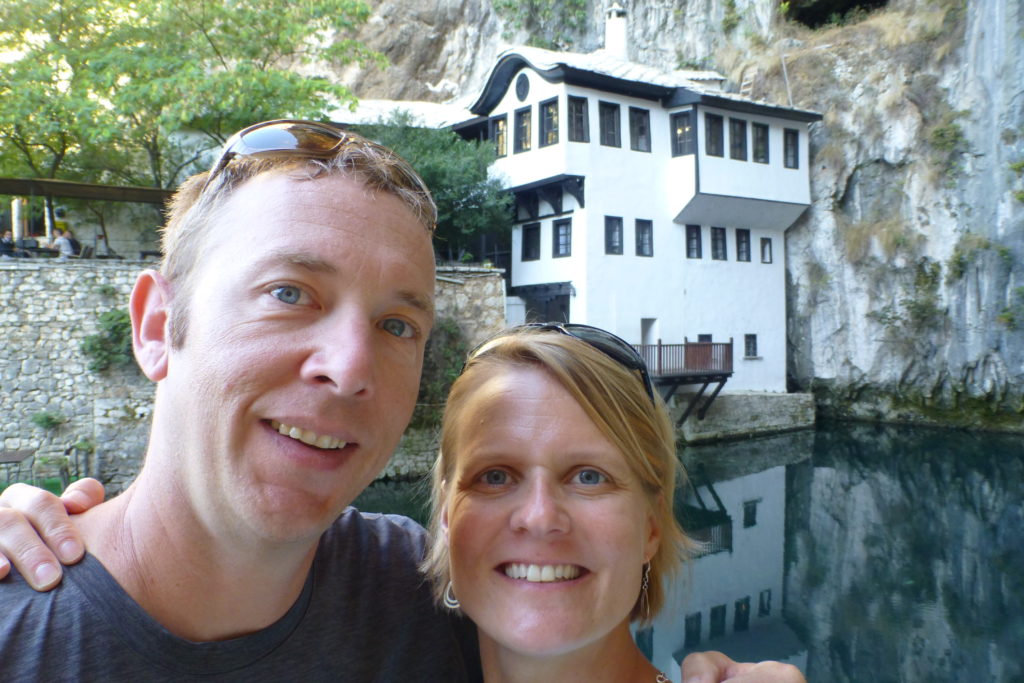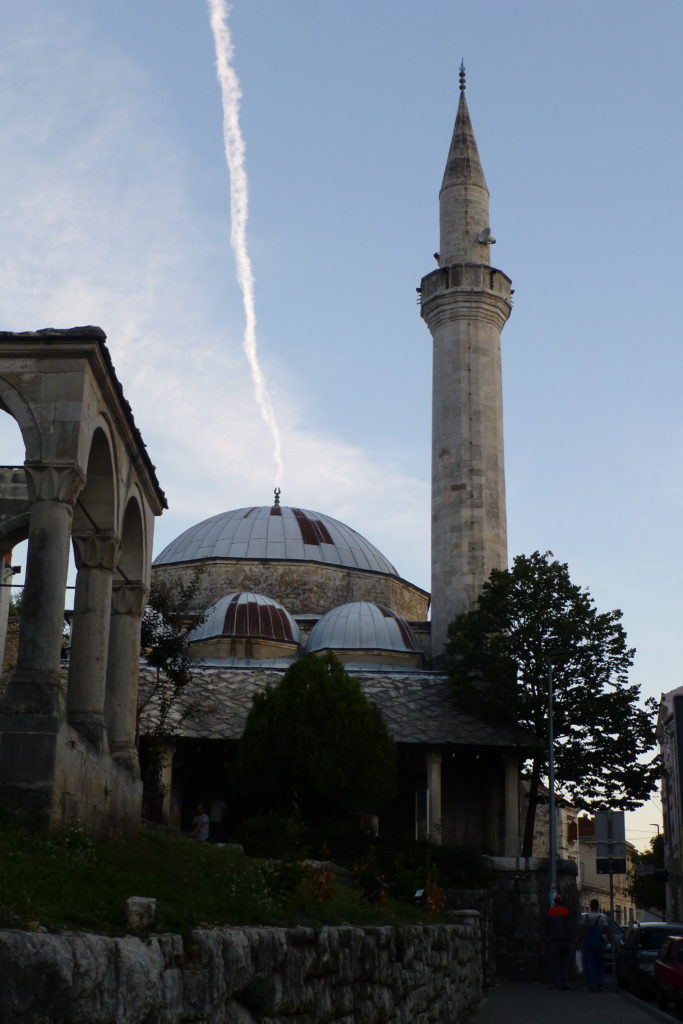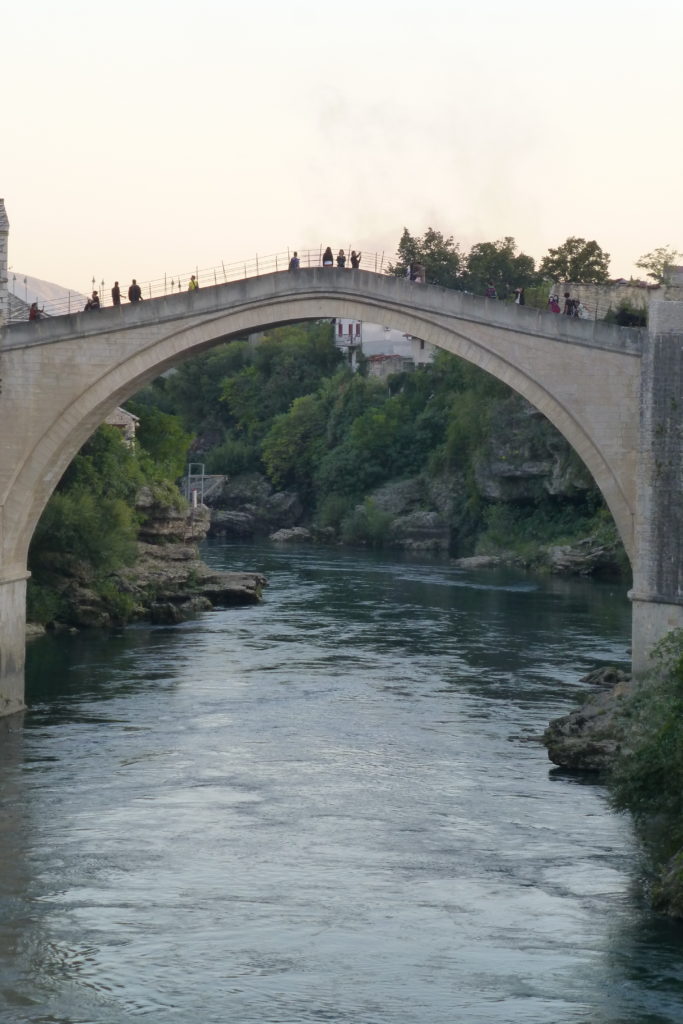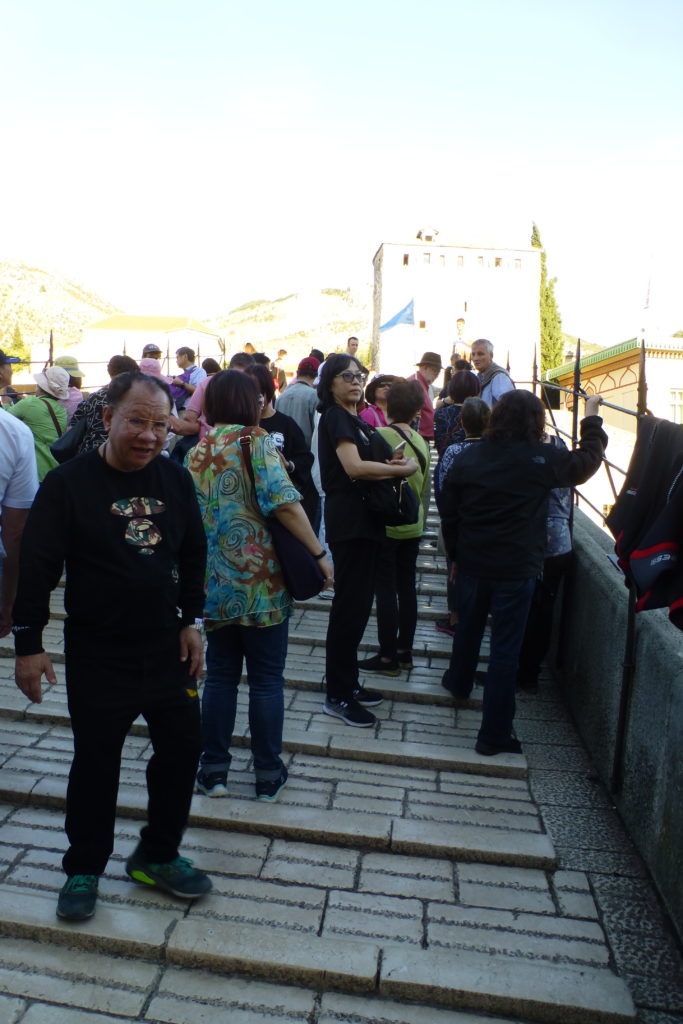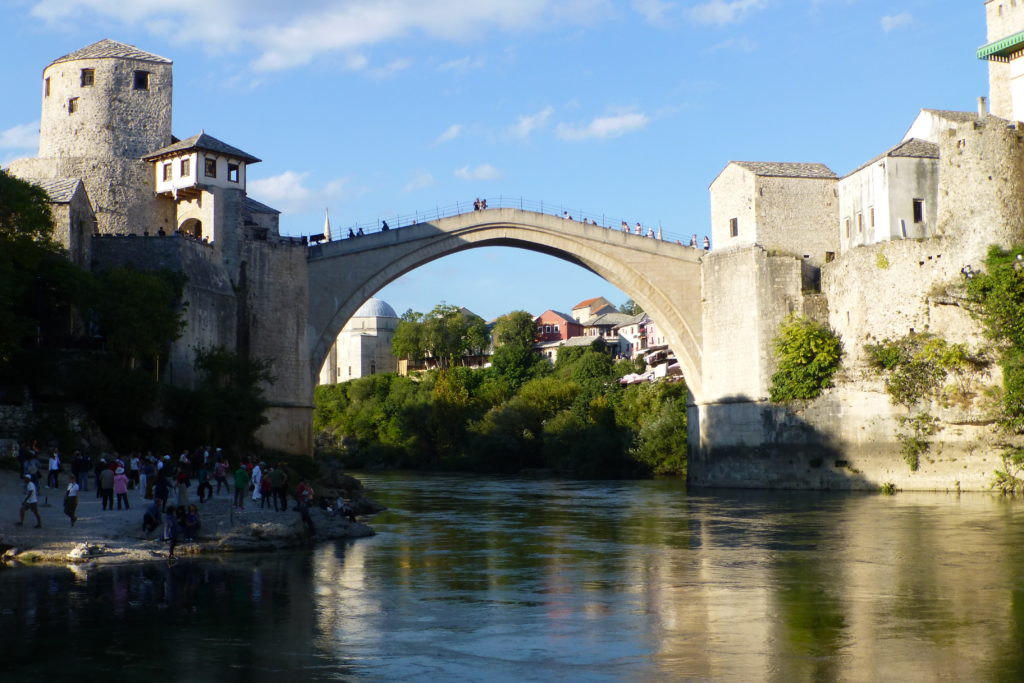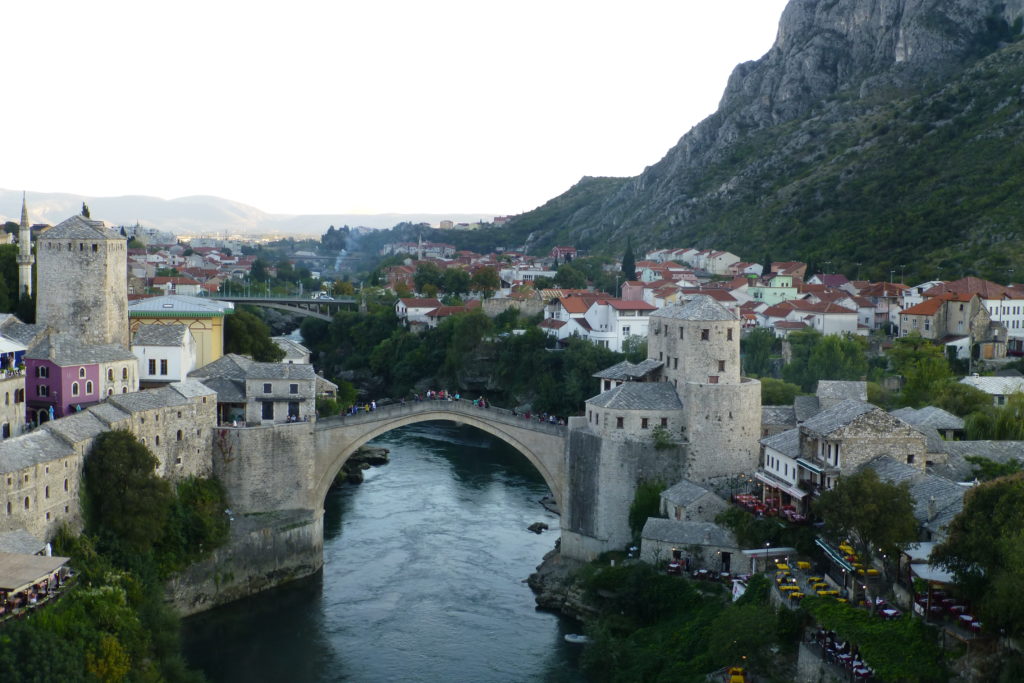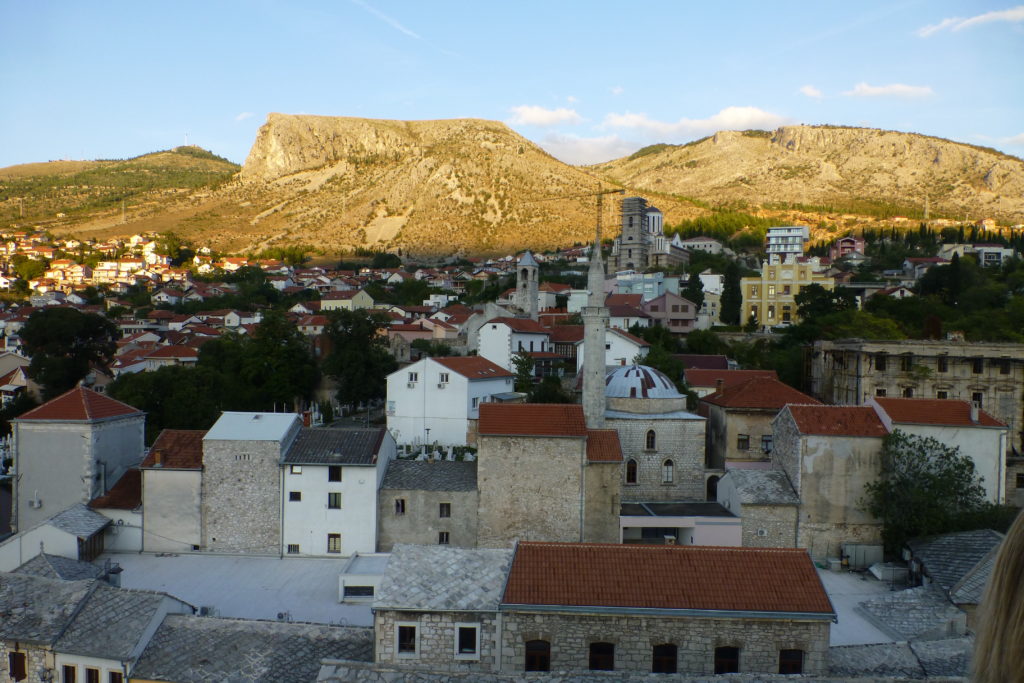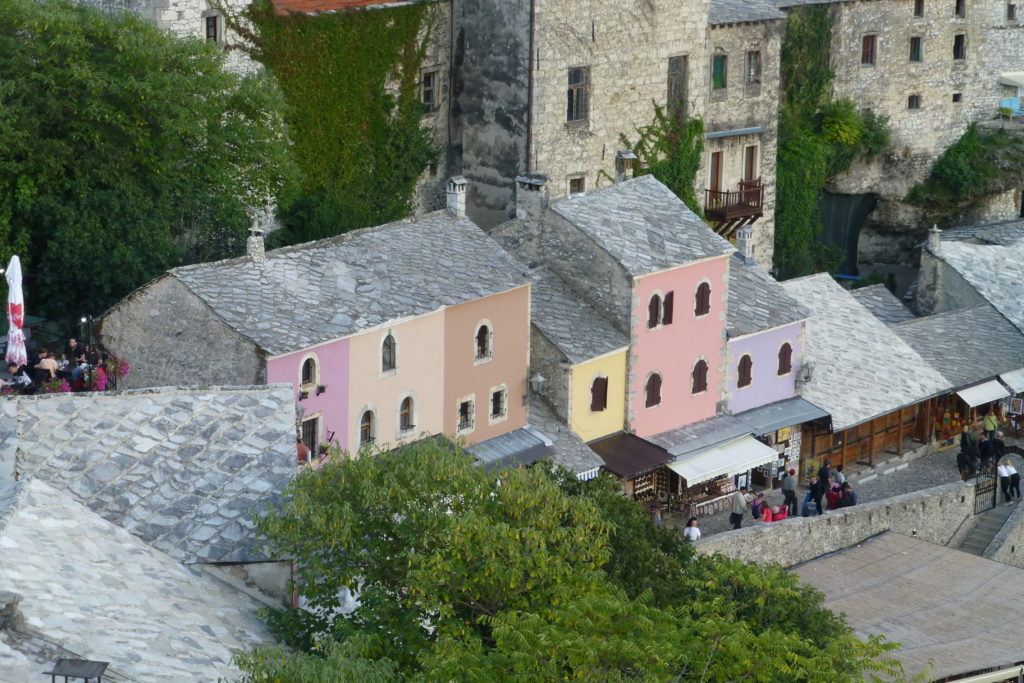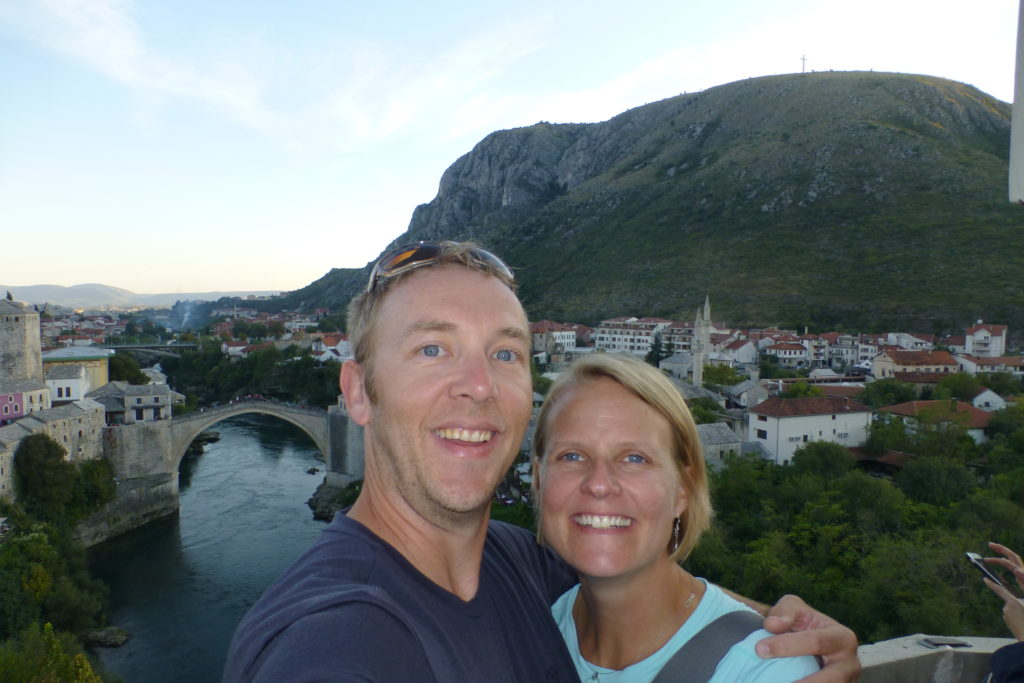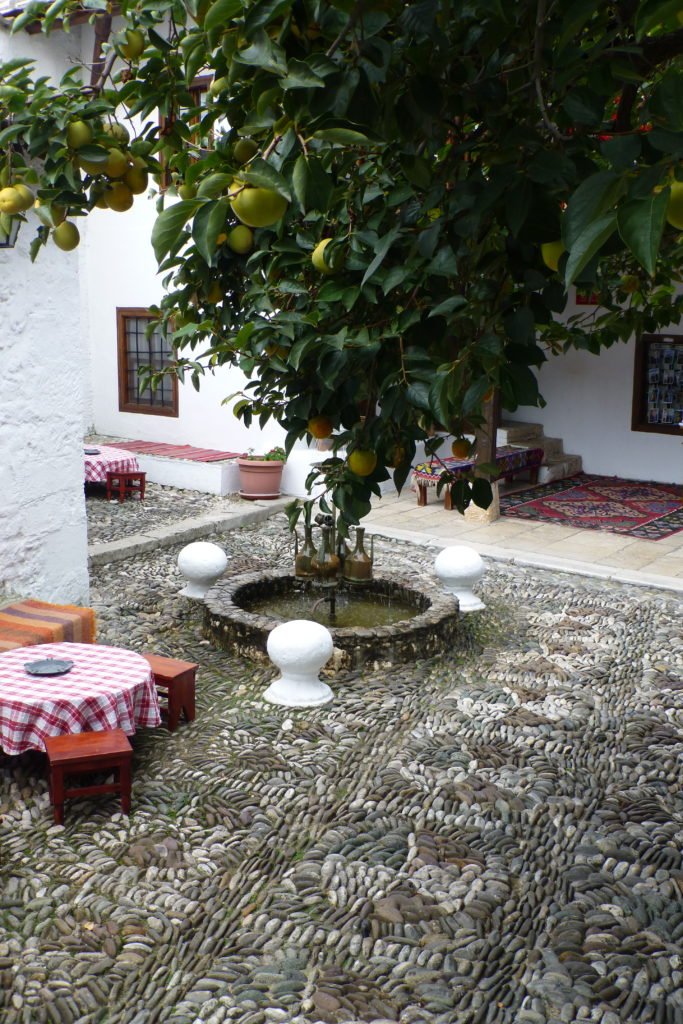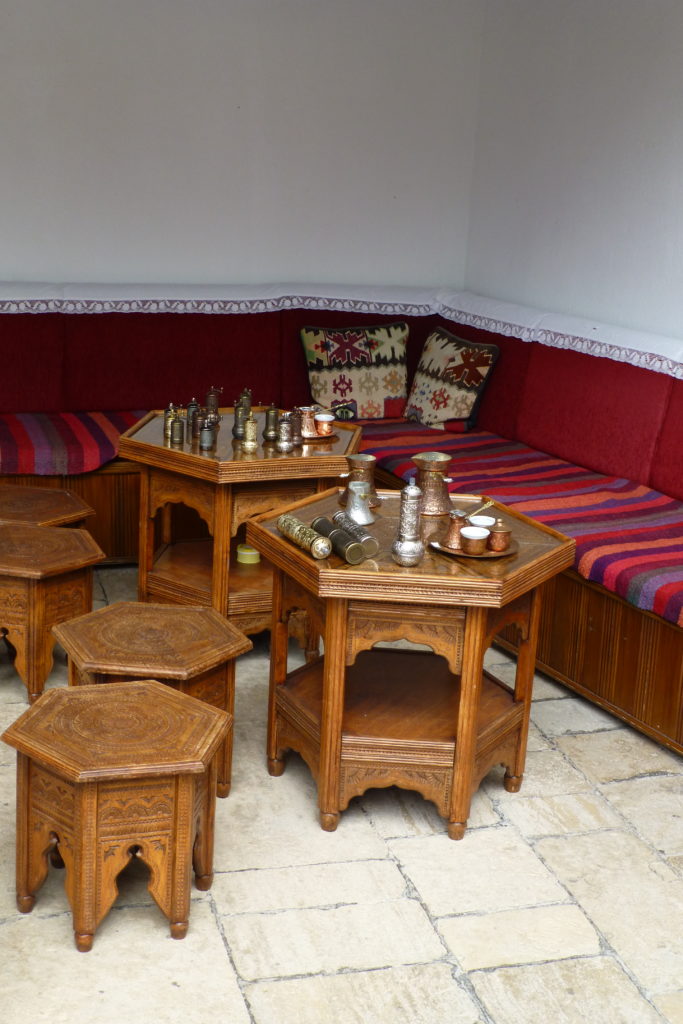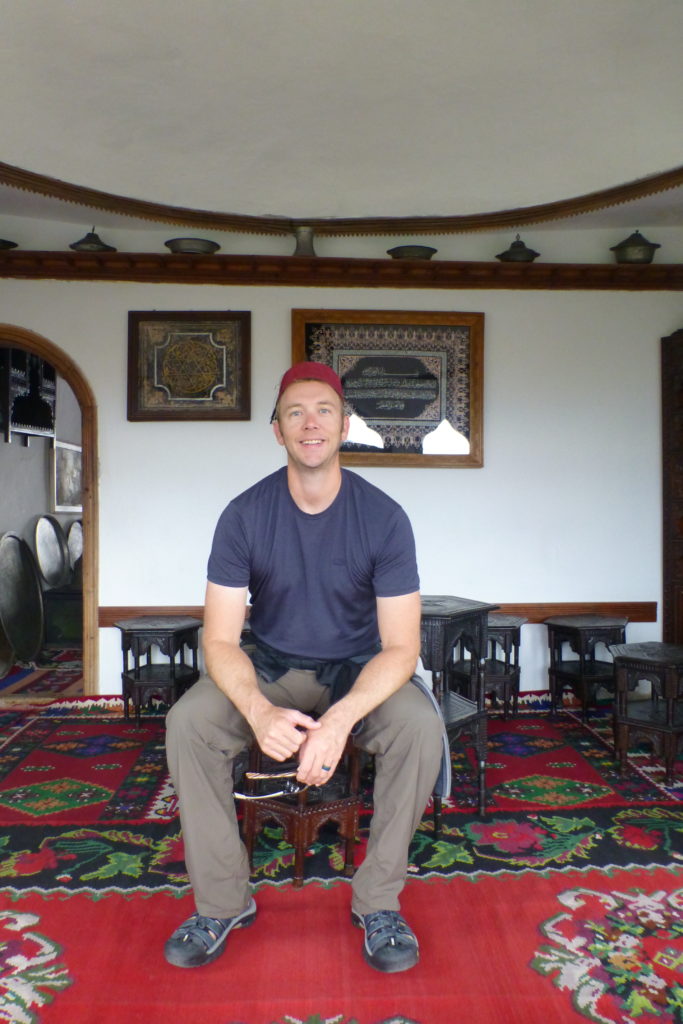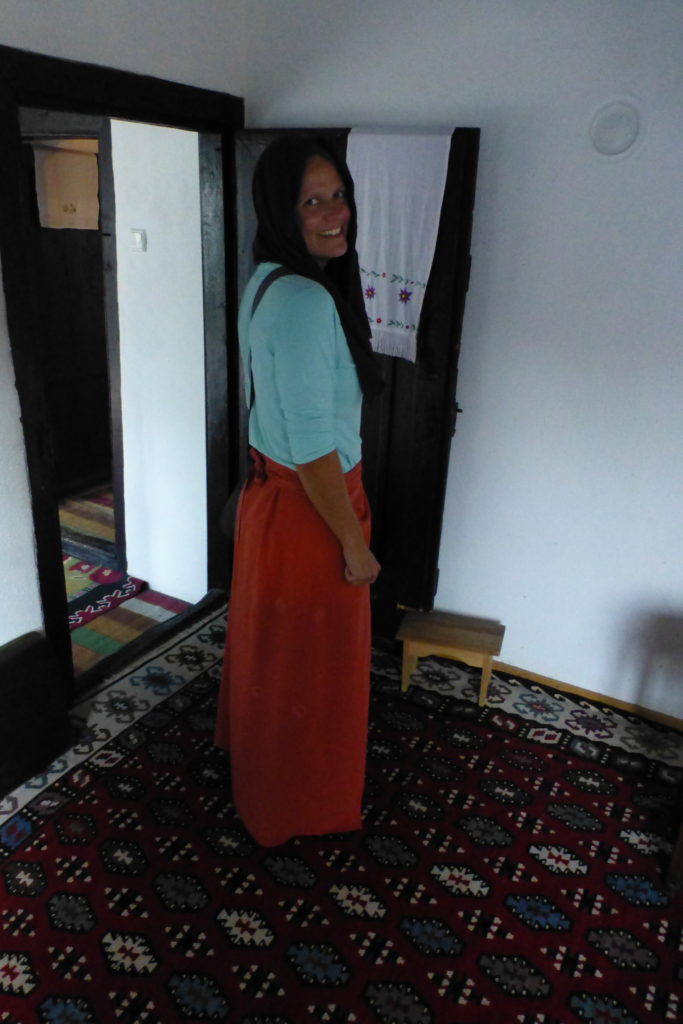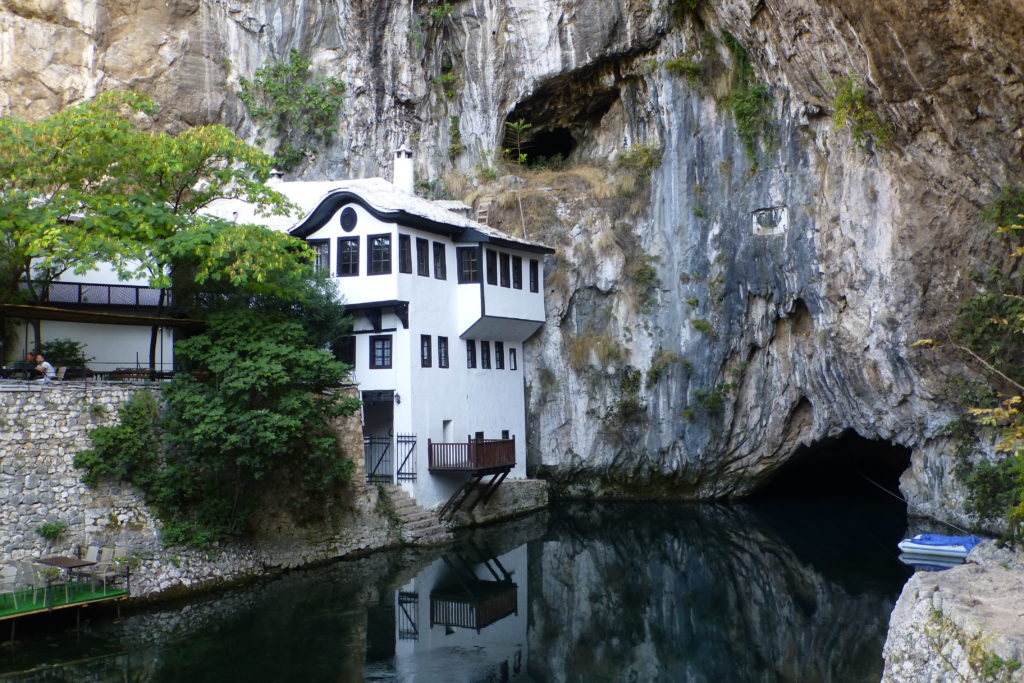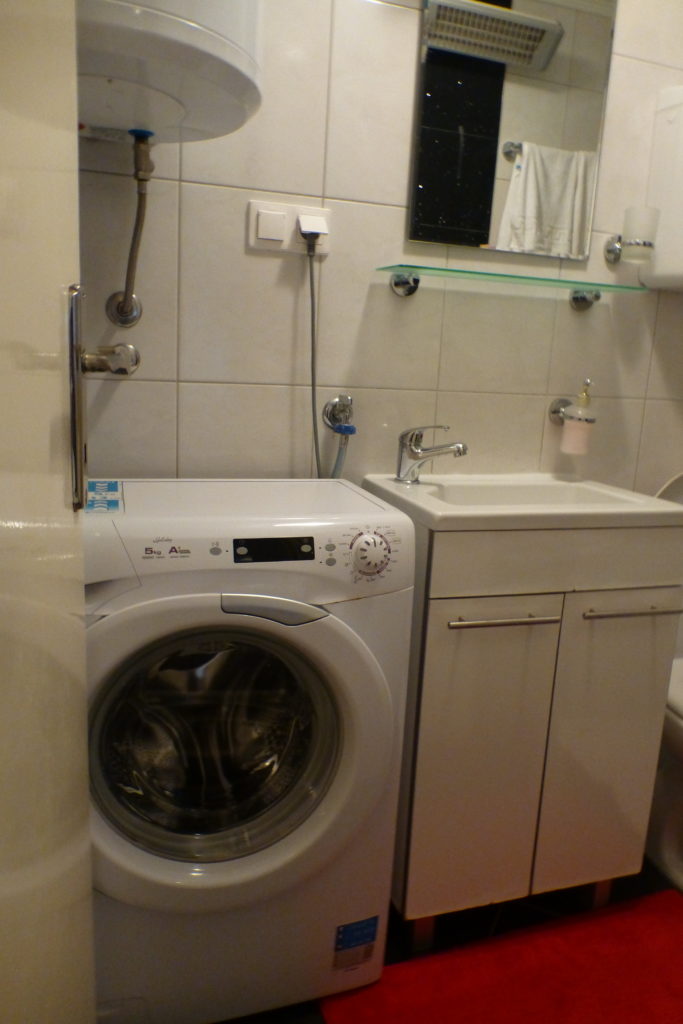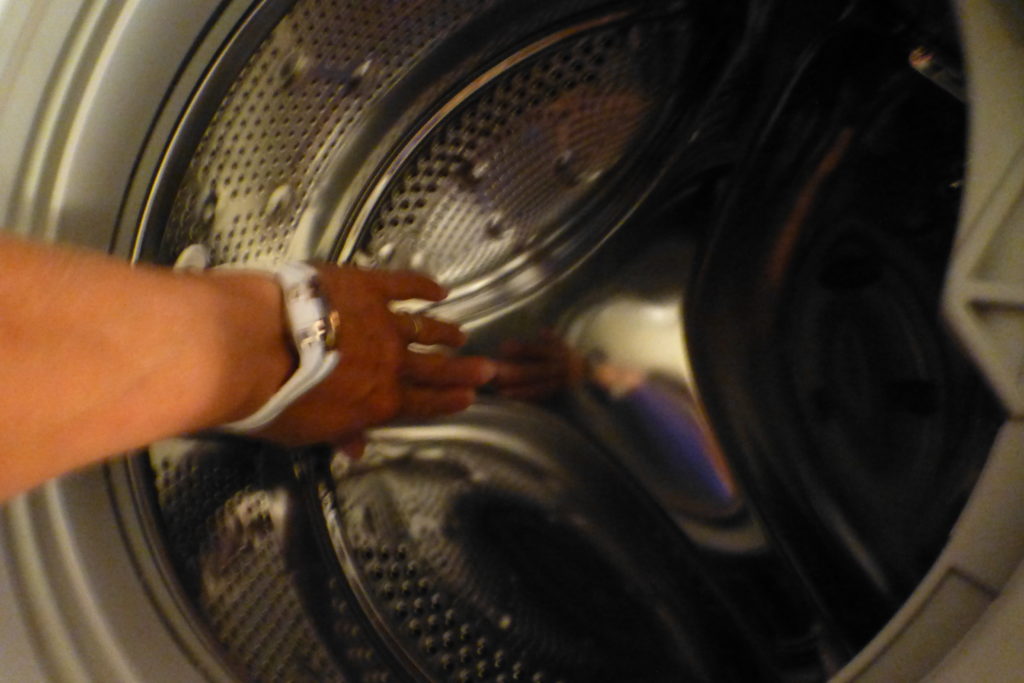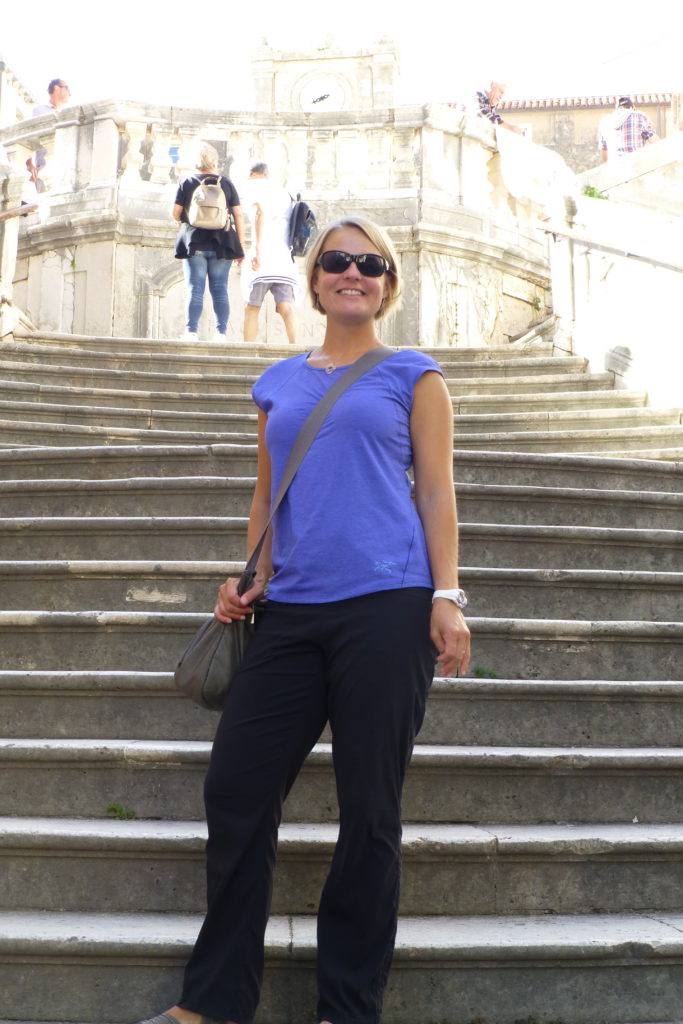Our last stop in the Balkans before returning to Dubrovnik before flying to Greece was a city called Mostar. While there is no noticeable difference to a casual tourist, Mostar is actually in Herzegovina, the part of the country closer to Croatia. Mostar is made up of both ethnic Croats who practice Catholicism and Bosniak Muslims. Like Sarajevo, the city saw heavy fighting during the war, and outside of the Old Town, you can see many of the same scars I described in the last blog.
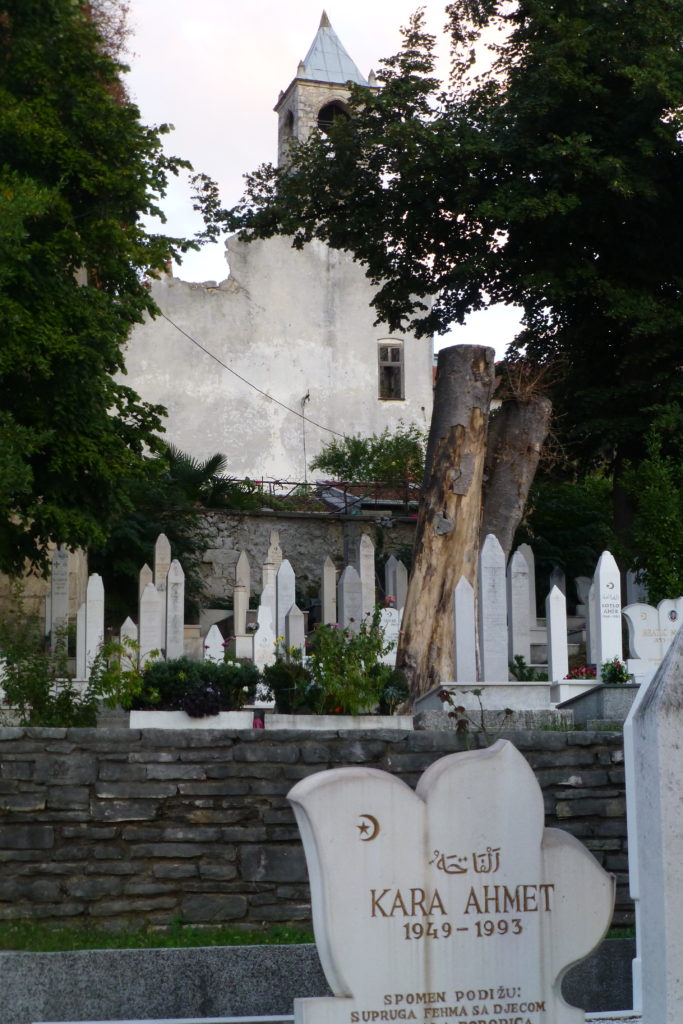
Mostar is actually a pretty small city, and after seeing the Ottoman quarter and learning enough about the Yugoslav war in Sarajevo to want a respite, we found ourselves a little out of gas here. It is an important spot, though, for Western tourists because of its proximity to Dubrovnik; in a fairly manageable day trip, western tourists can get a glimpse of Muslim culture and get a little different perspective (not just Croatian) on the Yugoslav War. Mostar, unlike Sarajevo is totally touristy, so it is possible to get just a taste of things instead of jumping into the deep end of the pool.
Rather than give a play-by-play of our time here, I will just offer a few experiences that we enjoyed. First and foremost, the symbol of Mostar is the Stari Most (Old Bridge). More than 400 years old, the bridge is the face of the city. The polished stone bridge rises steeply as it spans both sides of the rapid deep Neretva River. Tourists sort of stutter-step or shuffle their way across while members of the “Diving Club†actually jump off this thing (for tourist tips); during official competitions (Go ahead and Youtube it!), kayakers wait below to reel in divers. The bridge was virtually destroyed during the war and then rebuilt using similar materials and construction techniques as the original. Throughout the day, it is incredibly packed with tourists, but if you go after the buses leave town, you can ponder the lively river, beautiful mountains, and abundant mosques (as well as a giant Catholic cross and large church tower) throughout town.
The old town feels mostly Ottoman, surrounded by more modern western feeling neighborhoods. As I said, it is one of the most touristy places we’ve been, but it was also fun to see the oldest mosque in Mostar. Unlike other mosques we’ve visited, we were able to climb the minaret. The views of the city were great, especially of the Stari Most. From up high, you could really get a sense of it as the true center of life in the old town.
One other highlight was touring a traditional Turkish house. Built over a peaceful shady courtyard, its open design was full of rugs, cool old furniture with ornate carvings, and a grand view of the river. It would have been a great place to socialize with family and friends but also a peaceful place to pray in a spot next to nature. Plus, I got to wear a fez.
Then, there was…THE MEAT!! We ate twice at a place called Tima Irma’s; Irma is aptly described as a one-woman show by Uncle Ricky—Bosnians are normally more hands-off at restaurants, but she isn’t satisfied unless she knows you are enjoying every bite of the mounds of grilled meat, vegetables, local kajmac cheese, pita, and sauces that come out of her kitchen. In addition to cevapi and grilled chicken, there were at least three other types of patties, links, and cutlets on my platter. It was one of those times when I knew I should stop but plunged right on ahead with the artery clogging goodness instead.
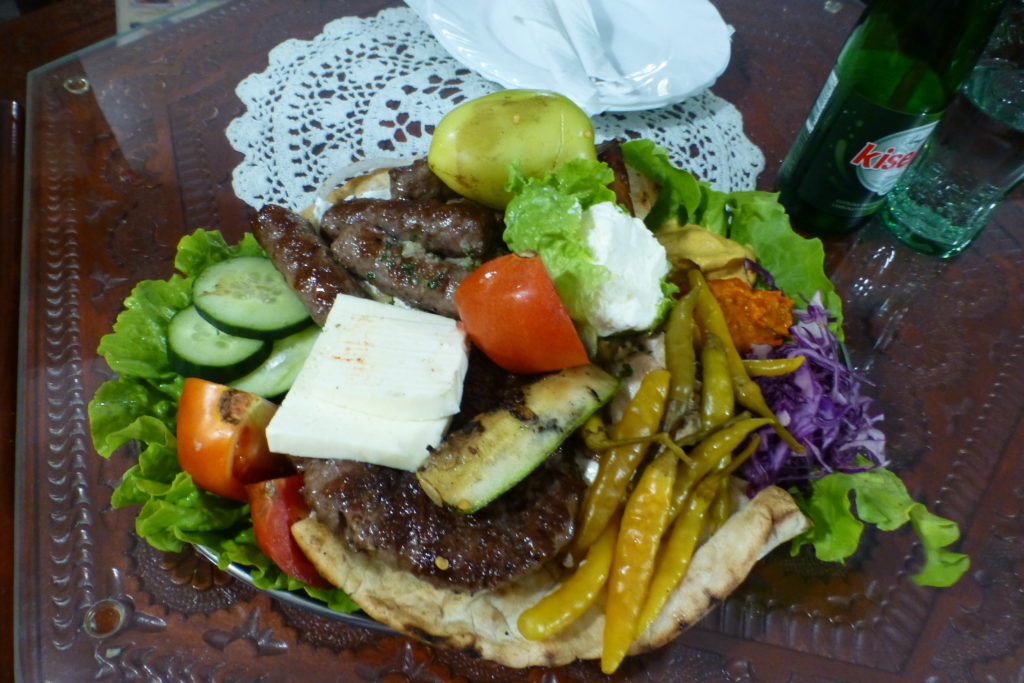
On our way out of Mostar, we made one last quick stop in the small town of Blagaj to check out a 15th century monastery for whirling dervishes, who valued poverty and humility but are also probably better known as “those spinning dancer guys you see in Turkey.†Unlike the Turkish home we saw in Mostar, this one must have stayed true to the humble personalities of the dervishes because the interior was quite plain, but oh, what a view they enjoyed! I must admit, though, we were both really hoping to see some spinning monks! Oh well.
By the time we got back to Dubrovnik, I think we both felt physically and emotionally tired—these last four blogs covered 11 days of travel. We had less than 24 hours before getting on a plane, and we basically just did some laundry in our apartment, using the world’s smallest washing machine, ate a couple of meals, drank a little wine, and read about Greece (nothing like planning ahead!). Oh, for all of you Game of Thrones fans, we also made our way up the “Shame, Shame Steps†outside the Cathedral.
After about five weeks in the Balkans, we were excited to transition to Greece—new people, new stories, and new adventures. I think we’ve had a very rich experience here; at first, I was worried that we were just on a run-of-the-mill, straight tourist trail summer vacation. When we travelled last time, we spent most of our time in places that didn’t have many people who looked or talked like we did—that has not been the case for most of our European travels this summer. We love y’all, and our British mates too, but a little diversity wouldn’t hurt. That’s not to complain—Slovenia and Croatia offered beaches, tourist farms, mountains, rocks, lakes, walled cities, dancing horses, and even some sadness. Montenegro and Bosnia-Herzegovina pushed us a little (okay, Sarajevo pushed us a lot!) and added a very different perspective on the Balkans. Now, we move on, as I hope the people in these beautiful countries will continue to do.
